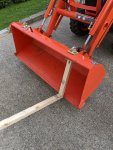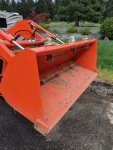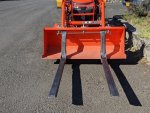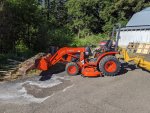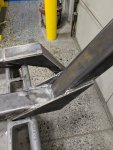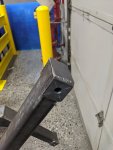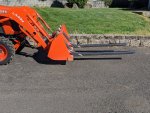Taking a lot of cues from this website, I designed a fork system that augments my bolt-on hooks.
I already had the two outside set of hooks from Ken's when I decided to do this project. But for it, I had to add the middle set. The middle clevis needed to be modified to allow the 5/8" rod to clear. Makes for a great mock-up of a fork truck with an adjustable width by sliding.
The tractor maxes out well before the forks. Could only lift a pallet of retaining block about a foot above the tractors hood. I used 3/16" tube and 1/4" plate. If I re-did these, think I would use 1/8" tubing and plate instead.
I already had the two outside set of hooks from Ken's when I decided to do this project. But for it, I had to add the middle set. The middle clevis needed to be modified to allow the 5/8" rod to clear. Makes for a great mock-up of a fork truck with an adjustable width by sliding.
The tractor maxes out well before the forks. Could only lift a pallet of retaining block about a foot above the tractors hood. I used 3/16" tube and 1/4" plate. If I re-did these, think I would use 1/8" tubing and plate instead.
Attachments
-
878.1 KB Views: 4,515
-
748.8 KB Views: 1,282
-
972.6 KB Views: 2,454
-
1,019.6 KB Views: 1,037
-
528.3 KB Views: 897
-
307.9 KB Views: 904


